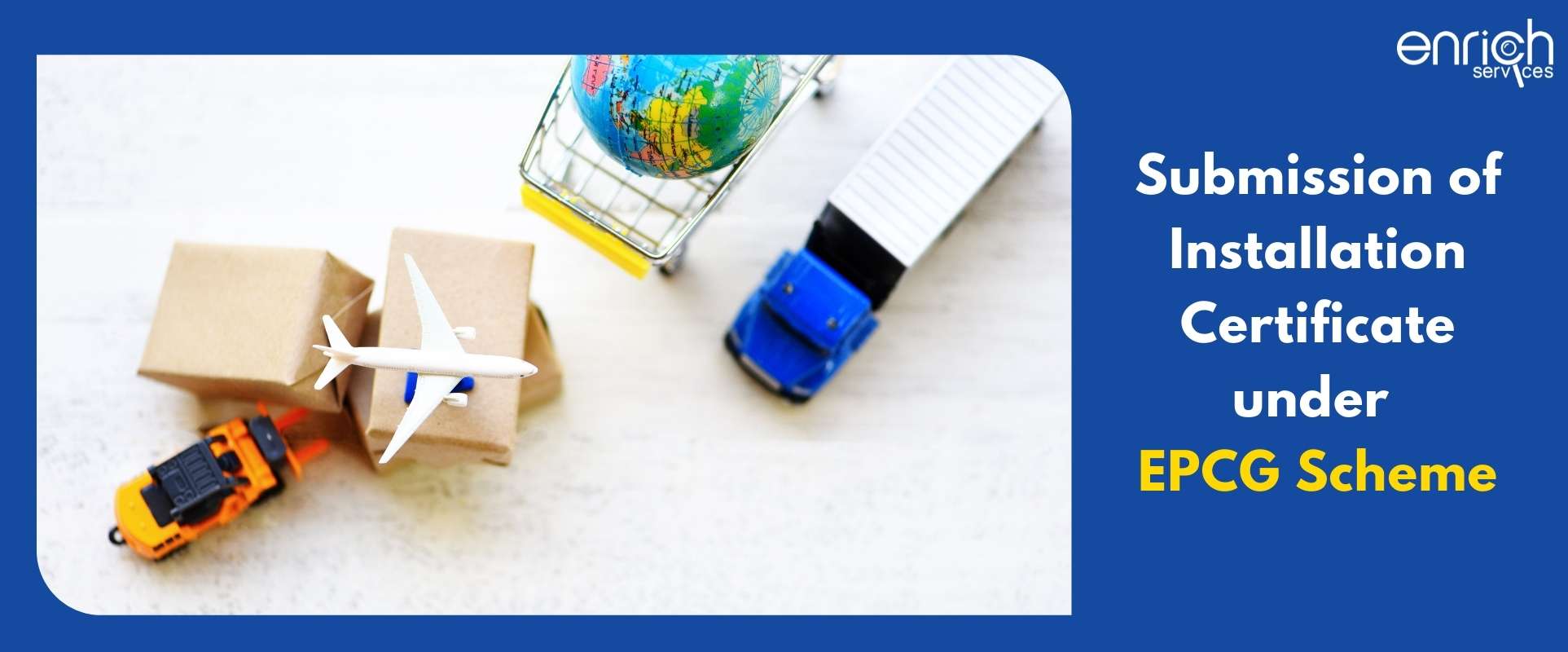Submission of Installation Certificate under EPCG Scheme

The EPCG Scheme‘s main purpose is to provide capital goods that facilitate producing and selling of high-quality goods and services. Capital goods are necessary raw materials for the establishment of an industry. The Scheme allows for zero custom duty on imports of capital goods, such as machinery, that are required to produce, pre-production, and post-production. These benefits can be availed by the manufacturer or Exporter, who must submit an EPCG License Online Application to DGFT.
The supporting manufacturer/factory location where the imported capital goods are to be installed must be added when submitting an online EPCG License application. We will import Capital Goods duty-free, and after customs has verified the License, we will move it factory premises specified in the License.
After installing the capital goods in the factory, the EPCG License Holder must obtain a certificate from the jurisdictional customs authority or an independent chartered engineer at the option of the authorization holder. Customs authority or an independent chartered engineer confirming installation of capital goods at factory/premises of authorization holder or his supporting manufacturer(s).
The need for an installation certificate –
The installation certificate is necessary because DGFT needs proof that the imported capital goods have been installed at the specified factory premises. That use of capital goods for production has begun.
The installation certificate will then be given out following careful inspection. We must submit the same at DGFT RA within six months from the date of imports
Compliance with Installation Certificate about DGFT and Customs –
The Installation Certificate must be submitted for DGFT’s records by HBP 2015-20’s paragraph 5.04. As is common knowledge, the EPCG Scheme permits us to import capital goods and spare parts. Since there are deadlines for submitting the Installation Certificate to DGFT under the EPCG scheme, the following information is provided:
• In the case of capital goods, the authorization holder must submit an Installation Certificate from an independent chartered engineer or customs authority to DGFT RA within six months of the date the import process was completed.
• If spare parts are involved, the license holder must submit the installation certificate within three years of the import date.
• For Customs records, a copy of the Installation Certificate should be provided in both situations.
• If the authorization owner misses the deadline of six months to give the DGFT the Installation Certificate, the DGFT may grant a single extension for a maximum of twelve months in exchange for a fine of Rs. 5,000. As a result, 6 + 12 = 18 months will be available for submitting the Installation Certificate to DGFT.
• If it becomes necessary during the export obligation period to move imported capital goods from one factory unit to another for various reasons, a fresh new Installation Certificate must be submitted to DGFT RA. However, shifting is only permitted if the new address is specified in the IEC and RCMC.
Authors Bio:-

